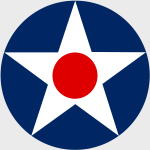Hobby Master HA7901 USN Boeing F4B-4 Pursuit Aircraft - VF-6 "Felix the Cat," USS Saratoga (CV-3), California, 1936 (1:48 Scale)
"Why should we have a navy at all? There are no enemies for it to fight except apparently the Army Air Force."
- General Carl Spaatz, Commander of the US 8th Army Air Force, after WWII
 The Boeing P-12 or F4B was an American pursuit aircraft that was operated by the United States Army Air Corps and United States Navy.
The Boeing P-12 or F4B was an American pursuit aircraft that was operated by the United States Army Air Corps and United States Navy.
Boeing developed the aircraft as a private venture to replace the Boeing F3B and Boeing F2B with the United States Navy, the first flight of the P-12 took place on June 25, 1928. The new aircraft was smaller, lighter and more agile than the ones it replaced but still used the Wasp engine of the F3B. This resulted in a higher top speed and overall better performance. As result of Navy evaluation 27 were ordered as the F4B-1, later evaluation by the United States Army Air Corps resulted in orders with the designation P-12. Boeing supplied the USAAC with 366 P-12's between 1929 and 1932. Production of all variants totalled 586.
P-12s were flown by the 17th Pursuit Group (34th, 73rd, and 95th Pursuit Squadrons) at March Field, California, and the 20th Pursuit Group (55th, 77th and 79th Pursuit Squadrons) at Barksdale Field, Louisiana. Older P-12s were used by groups overseas: the 4th Composite Group (3rd Pursuit Squadron) in the Philippines, the 16th Pursuit Group (24th, 29th , 74th, and 79th Pursuit Squadrons) in the Canal Zone, and the 18th Pursuit Group (6th and 19th Pursuit Squadrons) in Hawaii.
The P-12 remained in service with first-line pursuit groups until replaced by Boeing P-26s in 1934-35. Survivors were relegated to training duties until 1941, when most were grounded and assigned to mechanics's schools.
Pictured here is a 1:48 scale replica of a Boeing F4B-4 pursuit aircraft that was attached to VF-6 "Felix the Cat," then embarked aboard the USS Saratoga, operating out of California during 1936.
Sold Out!
Dimensions:
Wingspan: 8-inches
Length: 5-3/4-inches
Release Date: December 2010
Historical Account: "Stripe-Stacked Sara" - USS Saratoga (CV-3) was the second aircraft carrier of the United States Navy, the fifth ship to bear her name. She was commissioned one month earlier than her sister and class leader, Lexington, which is the third actually commissioned after Langley and Saratoga. As Saratoga was visually identical to Lexington, her funnel was painted with a large black vertical stripe to assist pilots in recognizing her. This identifying mark earned her the nickname "Stripe-Stacked Sara." Saratoga, Enterprise, and Ranger were the only fleet aircraft carriers of the United States Navy built before the war to survive and serve throughout the U.S. involvement in World War II.
She was laid down on September 26th, 1920, as Lexington class Battle Cruiser #3 by the New York Shipbuilding Corporation, at Camden, New Jersey; construction canceled and re-ordered as an aircraft carrier and reclassified CV-3 on July 1st, 1922, in accordance with the Washington Naval Treaty limiting naval armaments; launched on April 7th, 1925; sponsored by Mrs. Curtis D. Wilbur, wife of the Secretary of the Navy; and commissioned on November 16th, 1927, Captain Harry E. Yarnell in command.





 F4B4 Boeing
F4B4 Boeing 









